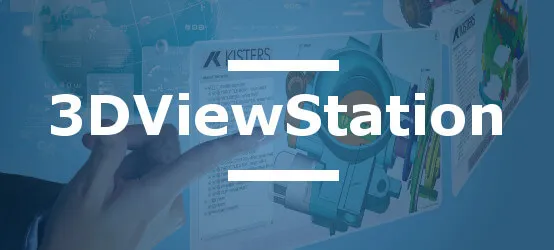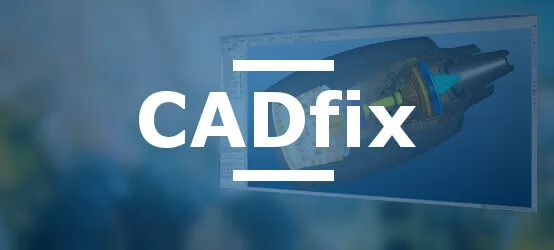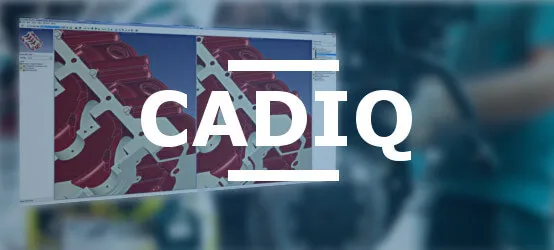How to protect the intellectual property of your design model
An aerospace engineering office recently discovered that a competitor had reproduced a patented technical solution just three months after sharing its CAD files with an industrial partner. The investigation revealed that no technical protection had been applied to the 3D models, thus exposing years of R&D and compromising a crucial competitive advantage. This situation, far from isolated, illustrates the critical importance of effectively protecting the intellectual property encapsulated in your digital designs.
In today's industrial ecosystem, your CAD models contain much more than simple geometries. They encapsulate your technical know-how, design methodologies, and sometimes decades of progressive optimization. In the era of extended collaboration and globalized supply chains, each file sharing represents a potential risk for your most precious intangible assets.
A Multi-Level Strategic Approach to Protect Your CAD Models
Effective security for your technical data relies on a graduated strategy, adapted to the sensitivity of the information and the level of trust granted to each recipient:
- Level 1: Parametric Protection - Maintain modifiability while removing expressions and formulas. Sensitive parametric functions are replaced with non-parametric equivalents, thus preserving the model structure without exposing your proprietary methodology.
- Level 2: Conversion to Neutral Format - Transform your native models into standard BREP formats (STEP, IGES) to share only precise geometry without parametric functionalities, limiting modification possibilities while maintaining dimensional integrity.
- Level 3: Use of Faceted Geometries - Share models in tessellated formats that effectively prevent direct reuse of geometry and significantly complicate reverse engineering attempts.
- Level 4: Selective Simplification - Eliminate non-essential details (holes, chamfers, fillets) or replace complex shapes with simplified envelopes before conversion, thus masking critical aspects of your design.
- Level 5: Controlled Access Without Transfer - Offer temporary visualization via secure web solutions, without any geometry transfer, for situations requiring maximum protection.
Specialized Solutions for Each Protection Level
To effectively implement this multi-level strategy, several complementary technologies are available, adapted to the main CAD formats in the market (CATIA, NX, Creo, SolidWorks, Inventor):
- Proficiency automates the transformation of parametric models by selectively preserving critical information
- CADfix enables controlled simplification of geometries while maintaining their functional integrity
- DEXcenter secures the entire process of sharing sensitive technical data
- 3DViewStation WebViewer offers controlled access without transferring usable geometry
Measurable Impacts on Your Performance
A robust intellectual property protection strategy generates tangible benefits:
- 85% reduction in strategic information leakage risks
- Acceleration of collaboration cycles with the external ecosystem
- Significant valuation of intangible assets in case of merger-acquisition
- Complete traceability of access to sensitive data
- Simplified compliance with confidentiality agreements
The detailed articles in this section will guide you through the various solutions and methodologies to effectively secure your technical heritage while maintaining smooth collaborations with your partners. Discover how to transform your protection constraints into a sustainable strategic advantage, thus ensuring the sustainability of your technological lead in the face of increasingly aggressive competition.
In an industrial world where multi-CAD collaboration has become essential, companies face a major challenge: how to effectively share 3D models while protecting their know-how? The answer lies in parametric conversion with preservation of the construction history, an approach that revolutionizes CAD interoperability by combining efficiency and intellectual security.
According to recent studies, engineers spend up to 30% of their time rebuilding CAD models, a time-consuming task that slows down innovation. Intelligent parametric conversion not only reduces this time to less than 10% but also offers precise control over sensitive information shared with your partners.
"Paris, February 2025. Thomas, R&D director, stares at his screen in horror. The prototype his team has been working on for three years has just appeared at a competitor's trade show in Asia. The leak? A simple email containing the complete CAD model, intercepted during an exchange with a subcontractor. Estimated cost: €4 million and 18 months of lost progress."
This story is unfortunately commonplace. Every year, hundreds of industrial companies see their intellectual property compromised by unsecured CAD exchanges. A recent study revealed that 68% of engineers transmit strategic technical data via email or FTP daily—the digital equivalent of sending your patents by mail without an envelope.
In a world where a single 3D file can represent millions in R&D, can you really afford this vulnerability?
The rise of cyber threats and the growth of remote work are forcing industrial companies to rethink their CAD data sharing strategies. How can you collaborate effectively without compromising intellectual property? Traditional file exchange methods expose your designs to major risks of leakage and unauthorized use. A new approach is needed: secure visualization without transmitting source files.
Discover how advanced visualization solutions now allow you to share complex 3D models without ever exposing your raw data, while preserving the analysis and collaboration features essential to your teams.
"In 1886, John Pemberton listed all the ingredients of Coca-Cola in his patent... except one. This 'Formula 7X,' kept in a vault in Atlanta, remains one of the world's most closely guarded trade secrets. Estimated value: €44 billion."
Pemberton's genius wasn't just his recipe, but his method of protection: sharing just enough to work, hiding the essentials. In modern manufacturing, your CAD models are your "secret formulas"—every internal detail represents years of R&D and millions of dollars in investment.
Yet most companies share their complete models with suppliers, subcontractors, and customers, exposing their most valuable intellectual property without any real technical protection.
What if, like Pemberton, you could share your creations while protecting what truly makes them valuable?





